[FIX] Windows Failed to Install the Update Error 0x800F0986
The update error 0x800F0986 may occur if the essential system files are corrupt. Moreover, corrupt Windows update components may also cause the issue at hand. The user encounters the issue while updating the OS of his system. The error 0x800F0986 is reported to occur with many feature and quality updates. Usually, the following type of message is shown:
Installation Failure: Windows failed to install the following update with error 0x800F0986
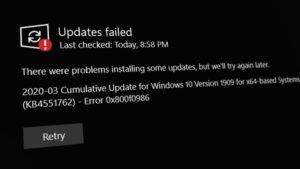
Solution 1: Run the Windows Update Troubleshooter
You may fail to update the Windows of your system if the update modules of the OS are stuck in operation. In this case, running the Windows built-in Update Troubleshooter may solve the problem.
- Press the Windows key and open Settings.
- Now, select Update & Security, and in the left pane of the update window, navigate to the Troubleshoot tab.
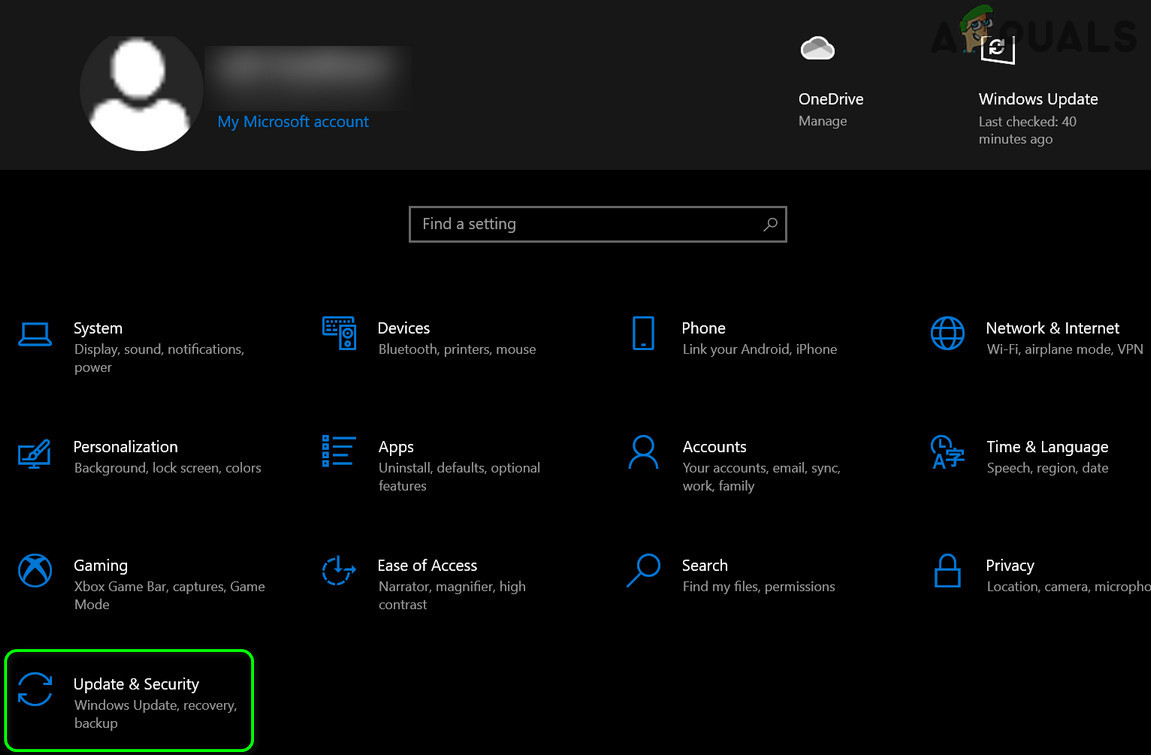
Open Update & Security - Then, in the right pane, click on the Additional Troubleshooters and select the Windows Update to expand it (in Get Up and Running section).
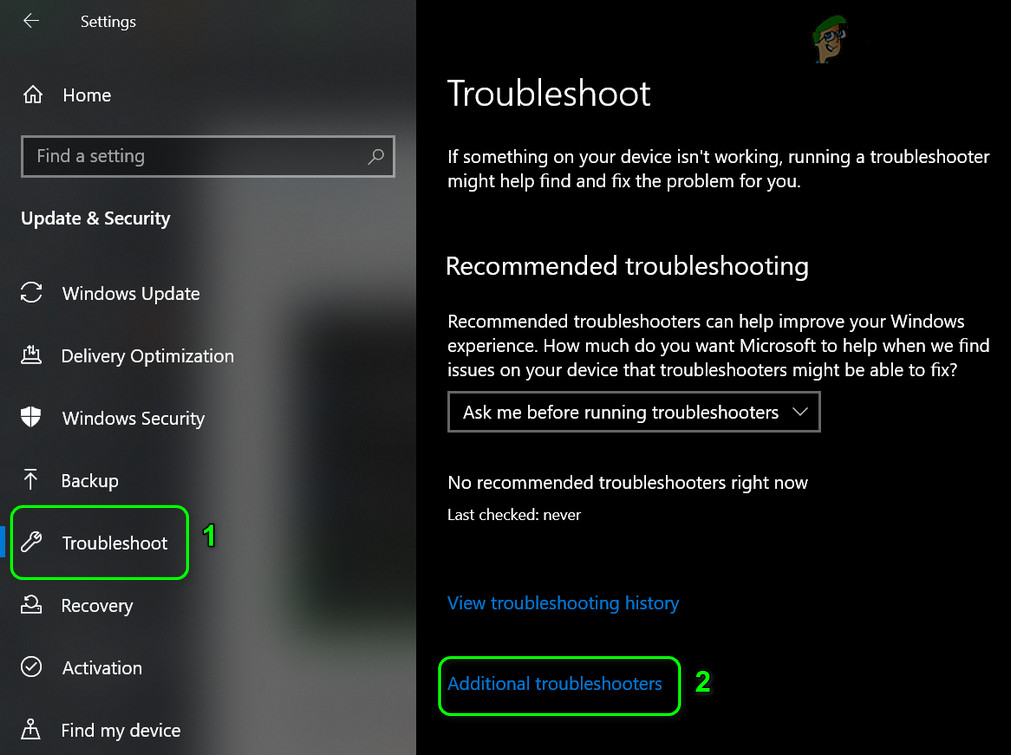
Open Additional Troubleshooters - Now click on the Run the Troubleshooter button and let it complete its process.
- Then after implementing the suggestions by the troubleshooter, check if the updates are working fine.
Solution 2: Manually Install the Windows Updates
If the automatic Windows updates are failing to install, then using the standalone installer of the update may solve the problem.
- Launch a web browser and navigate to the Windows 10 page of the Microsoft website.
- Now, under the latest update (e.g., October 2020 Update), click on the Update Now button.
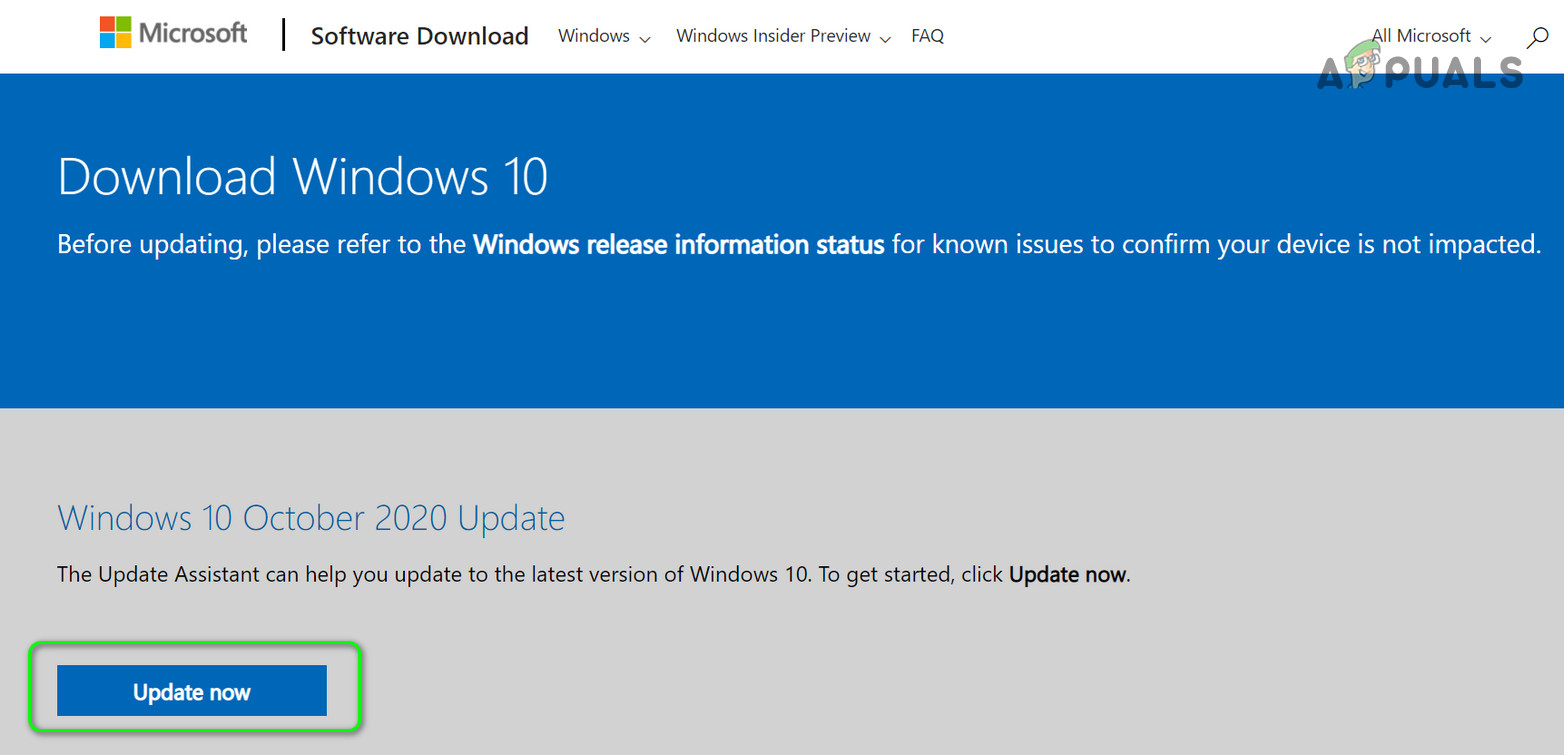
Click on the Update Now in the Windows 10 Download Page - Then download the offline installer and once the download is complete, launch it as administrator.
- Now follow the prompts to complete the update process and then reboot your PC.
- Upon reboot, check if the Windows is clear of the update error.
If you are encountering the issue with a particular update (e.g., KB4598242), then you may use the following steps (you can find the latest KB on the Microsoft website):
- Launch a web browser and navigate to the Windows Updates Catalog
- Now, in the search box, enter the problematic KB (e.g., KB4598242) and press the Enter key.
- Then, in the results, download the KB as per your OS and system.
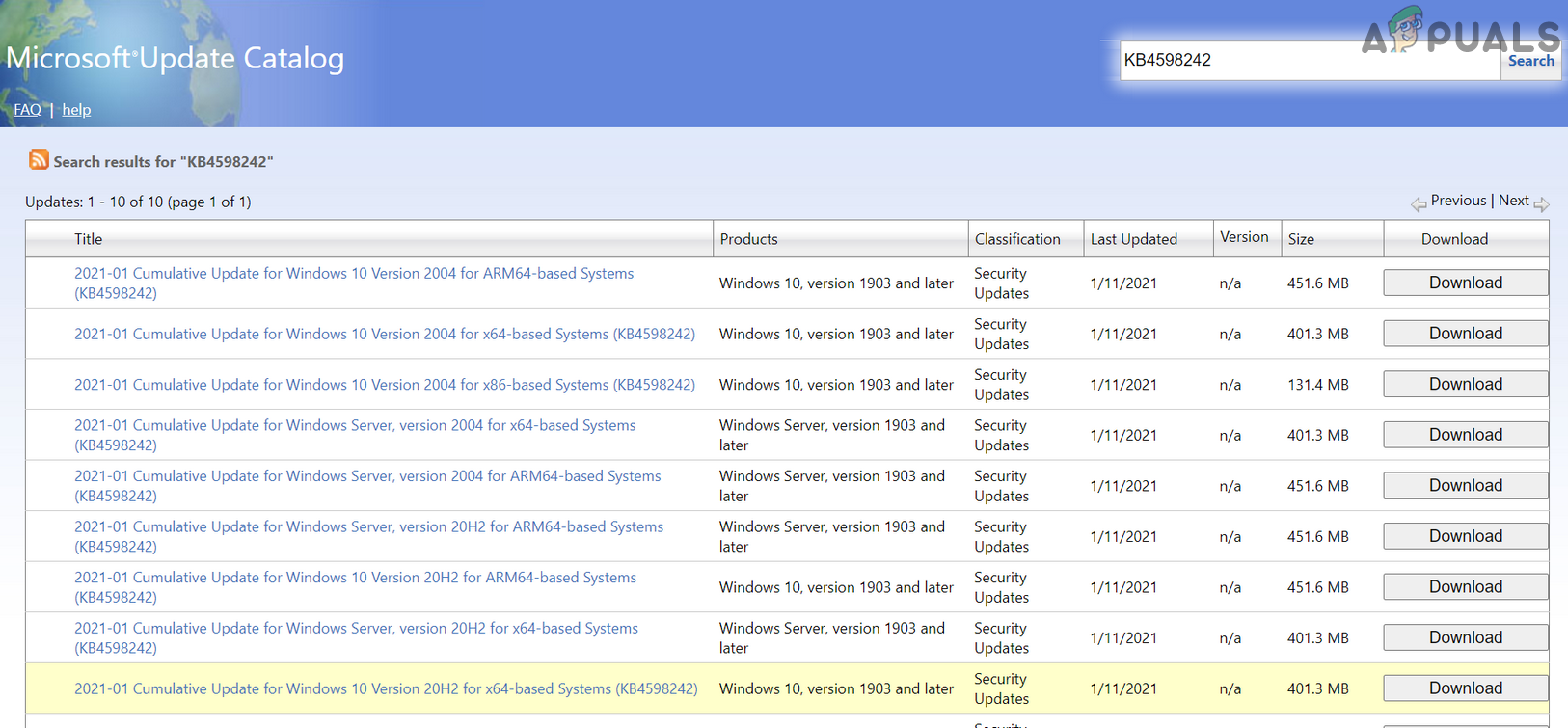
Download the Offline Installer of the KB4598242 Update - Now launch the downloaded update installer as administrator and follow the prompts to complete the setup process.
- Then reboot your PC and check if the updates can be installed without any issue.
Solution 3: Use SFC and DISM Scans
You may encounter the Windows update error 0x800F0986 if the essential operating system files are corrupt. In this context, performing the SFC and DISM scans may clear the files’ corruption and thus solve the problem.
- Perform an SFC scan of your system (make sure to try when you can spare your system for some time as the scan may take some time to complete) and then check if the update issue is resolved.
- If not, then try DISM to repair Windows in an elevated Command Prompt but during this process, make sure to execute the following command:
DISM.exe /Online /Cleanup-image /Restorehealth
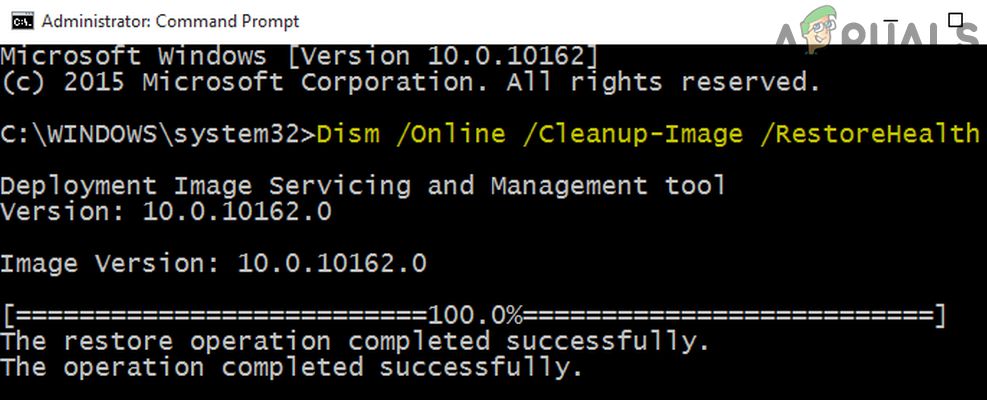
Use the DISM Command to RestoreHealth - Once the DISM process is complete, check if the system is clear of the error 0x800F0986.
Solution 4: Reset the Windows Update Components
The issue may arise if any of the essential Windows Update Components are corrupt or stuck in the operation. In this case, resetting the Windows Update Components may solve the problem. But before proceeding, make sure to create a system restore point.
- Press the Windows key and search for: Command Prompt. Then, in the results, right-click on the result of the Command Prompt, and in the mini-menu, choose Run as Administrator.
- Now execute the following cmdlets (do not forget to press the Enter key after each command):
net stop wuauserv net stop cryptSvc net stop bits net stop msiserver Ren C:\Windows\SoftwareDistribution SoftwareDistribution.old Ren C:\Windows\System32\catroot2 Catroot2.old net start wuauserv net start cryptSvc net start bits net start msiserver
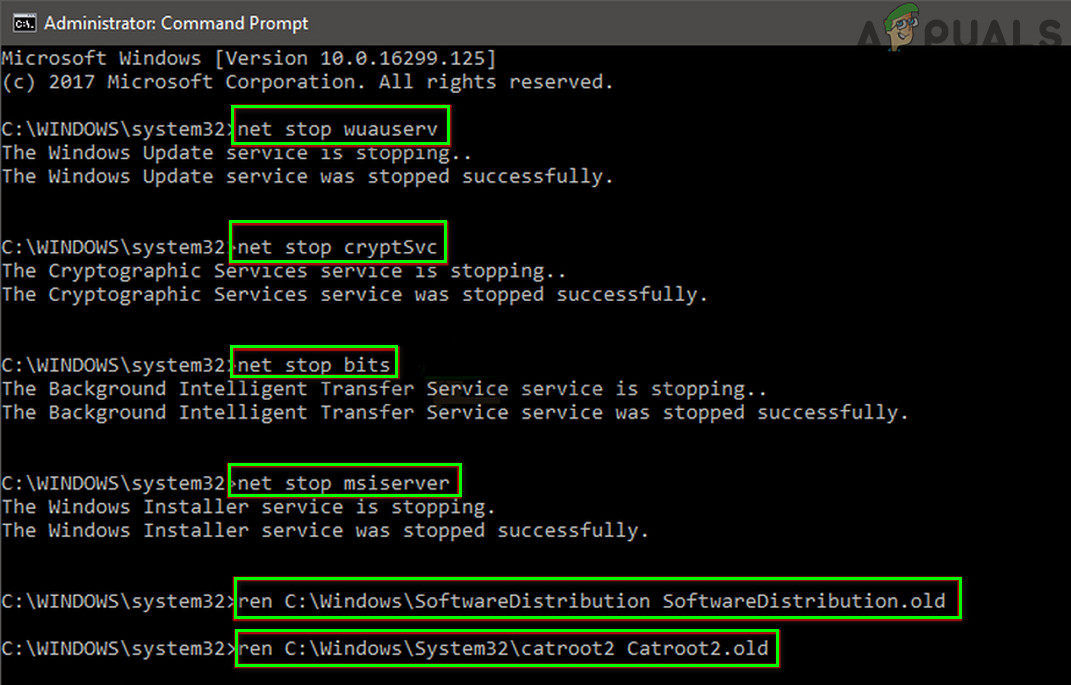
Stop the Services Related To Update & Rename the Software Distribution and Catroot2 Folders - Then close the Command Prompt and check if the update error 0x800F0986 is resolved.
If not, then check if using the WuReset.bat file (pre-written commands to reset the Windows Update modules) resolves the issue. Make sure to launch the WuReset.bat file as administrator.
Solution 5: Perform an in-place Upgrade
If none of the solutions has worked for you, then we are left with no other option but to perform an in-place upgrade. But before proceeding, it will be good to create a system restore point and backup the essential data in the system drive. Also, make sure to remove any 3rd party security product (at your own risk), so that the upgrade process can function without any interruption. Moreover, the secure boot may hinder the upgrade process, so make sure to disable it in the system’s BIOS. Additionally, during the process, whenever asked to, make sure to select Keep Windows Settings, Personal Files, and Apps. Last but not least, make sure your system drive has enough free space available (for 32-bit: 20GB and 64-bit: 32 GB) to complete the upgrade process.
- Launch a web browser and navigate to the Windows 10 ISO download
- Now scroll down and then click on the Download Tool Now (under Create Windows 10 Installation Media).
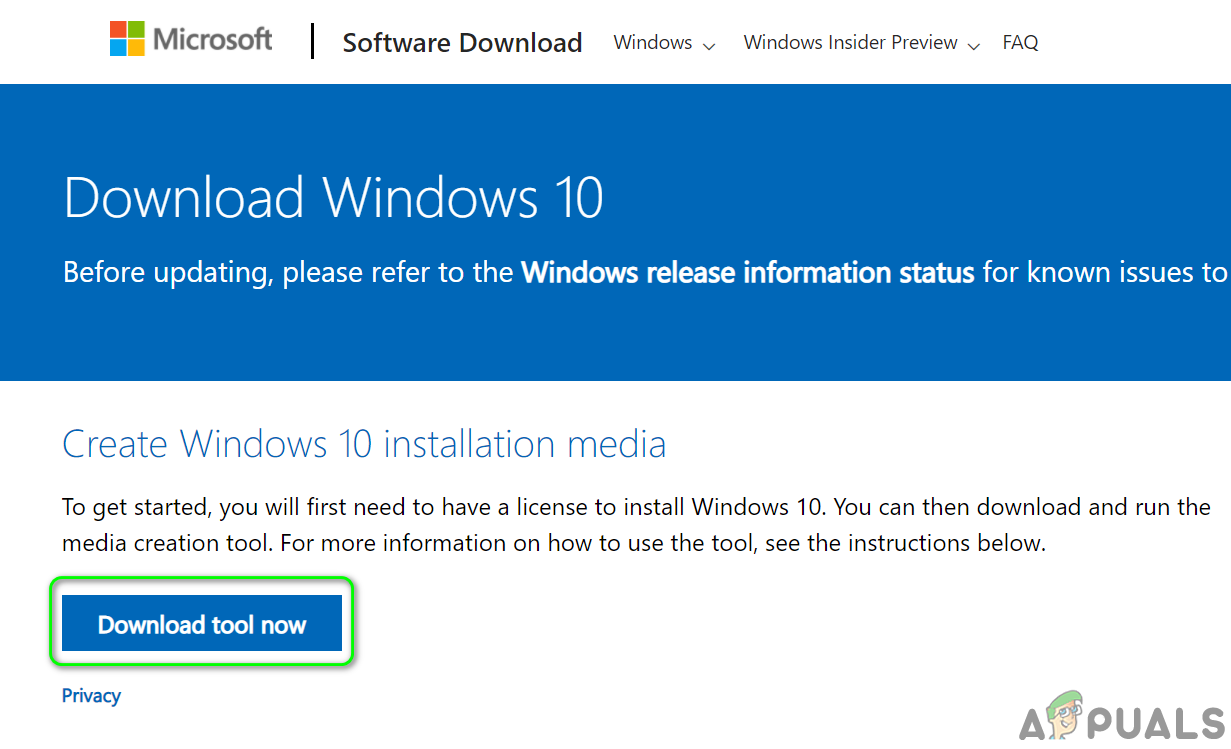
Download Media Creation Tool Now - Once the download is complete, launch the setup file as administrator and follow the prompts to complete the process.

Launch the Setup in Windows 10 ISO Folder as Administrator - Then reboot your PC and check if the updates issue is resolved.
If the upgrade process fails, then try the same through a Windows 10 bootable USB stick. If the issue is not resolved after the in-place upgrade, then you may perform a clean installation of Windows 10.





